Mayday

May 1st, the first day of summer or just simply Bealtaine. Ancient festivals celebrating this day included hilltop bonfires symbolising a fresh start at the beginning of a new season, but to me, May is the month of Green and White. Just look around! The last of our trees, the Ash and the Oak have come into foliage. And May is the best month to see the 40 shades of green as you stroll along a hedgerow our take a walk in your local Park.
As for the White, just look at the flowers in bloom during May. The obvious one is the Mayflower or May blossom. The plant is more commonly known as Hawthorn, and at the moment it is spectacular. Another plant with white flowers this month is Cow Parsley. This is a common hedgerow plant and regularly seen along roadside verges and is a member of the carrot family growing to about 1 metre high. The stem of the cow parsley plant is hollow and is often used by children to make blowpipes. This is not to be recommended as this plant may be confused with another similar plant (Giant Hogweed) which also has a hollow stem, but this plant contains a poisonous sap. Giant Hogweed will be dealt with later on in the year.
Another familiar tree in bloom this month is the Horse Chestnut. The flowers are mostly white with a reddish tinge and they grow in dense erect spikes commonly referred to as candles. A variety with red coloured flowers is occasionally seen, a good example being a stand in Marley Park in Dublin This variety will not flower for another month or so.
Mayfly
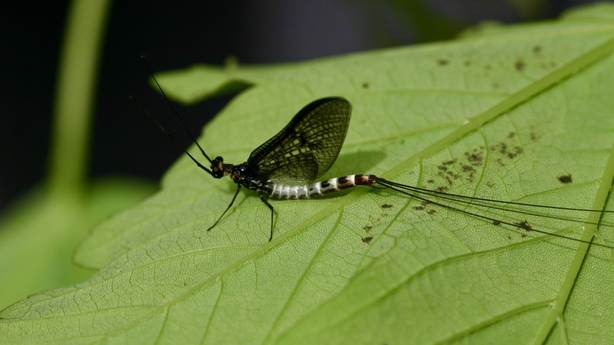
The mayfly belongs to that group of insects known as the Ephemeroptera. Ephemeros is Greek for short-lived and pteron means wing and this helps to explain its extremely short life - as an adult! The mayfly spends almost its entire life (2 - 3 years) under water as a larva or nymph where it makes a burrow and feeds on vegetable matter. At this time of year, they hatch in the early morning, thousands of them, and later in the day you can witness the dance of the males as they fly up onto the branches of trees alongside the river, where they shed their outer skin to reveal their beautiful reproductive colours - white body and black wings. Adults have only one function. Find a partner and reproduce. After mating, the females fly to the trees along the riverbanks where they spend a few hours before returning to the water to lay their eggs. The eggs sink to the bottom of the river, starting off the life cycle once again. Both males and females then die, after having spent just one day as an adult. Late in the evening, watch out for trout rising to the surface of the water, taking these dead and dying adults.
Mayflies are among the oldest insect groups and have been found as fossils dating back about 300 million years.
Maybugs
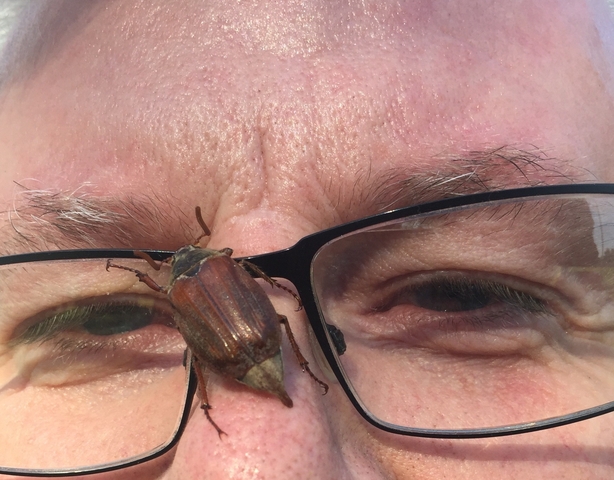
Maybugs are large beetles with fan-like antennae and they can fly. They are seen on warm evenings in May. They are correctly known as cockchafers. They can be seen and heard at this time of year. The sharp point at the end of the insect is not a sting but is used by the female to push her eggs into the soil. The fan like antennae are used to find a mate and food. Adult cockchafers only live for about 5 or 6 weeks. During that time, they look for a mate and fly into the tree tops to feed on leaves. They fly at dusk on warm evenings, making a noisy hum, and are attracted to light. They won't harm you!
The Nesting Season
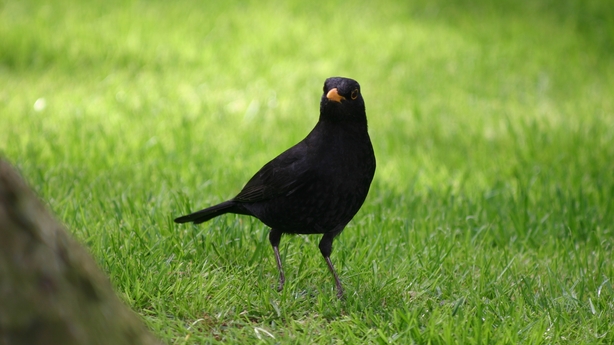
As you go on a summer’s evening for a walk or sit out in the garden, keep a special eye out for birds returning to the nest with mouthfuls of food for hungry young chicks. If you have a hedge in your garden, there is a good chance that you may have blackbirds nesting in it. Although Blackbirds begin nesting early in the year, it is those nests later on that are most successful. Keep an eye out for a Blackbird, especially a male, spending a lot of time on your lawn searching for insects, and one flying off with a mouthful of wriggling insects is a sure sign of a nest nearby. Male Blackbirds are easy to tell apart from the females. The male has a glossy black plumage and a distinctive orange-yellow bill and yellow eye ring. In contrast, the female has a dark brown plumage with a faintly spotted breast. This is a good example of sexual dimorphism. Sexual dimorphism is where the male and female of a species look very different, in fact so much so in some species you might not believe that they are in fact the one species. The Peacock and Peahen are a good example. The fact that the females are a duller colour allows the female to remain camouflaged, especially when she is sitting on eggs.
The Dawn Chorus
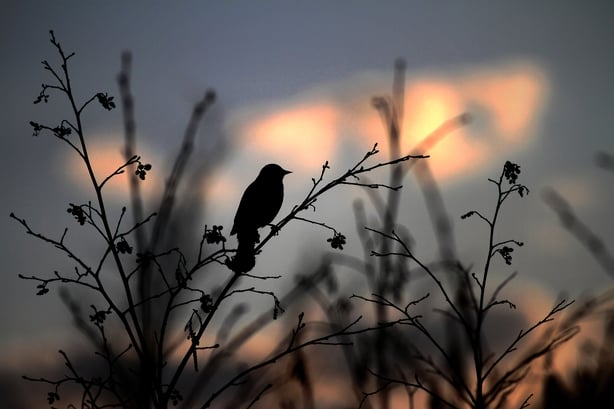
At this time of year, you can’t but notice the cacophony of sound from just before first light. The Dawn Chorus is the collective sound of all the birds that sing at dawn. The Dawn Chorus is usually associated with woodland birds, but it can be heard everywhere. Males are singing from all advantage points. They do so for a number of reasons. At this time of year, pairs have been formed and so males are singing to proclaim their territories and warn off other males who might want to move in. Although many species are singing watch out and listen for the blackbird, the robin and the wren. With a little practice, you can learn these three of and then move on to learn the other species.
If you find it hard to get out of bed that early in the morning why not try and catch the dusk chorus. Although it is not quite as dramatic as the dawn chorus, there is nothing to equal an eving walk in woodland listening to the dusk chorus and another bird to listen out for with a beautiful song is the blackcap. Donadea Forest Park in Co. Kildare is one of my favourite places to walk at this time of the year.
Sunday May 7th is National Dawn Chorus Day and Birdwatch Ireland have organised a number of events to take place on the day. Click here (http://birdwatchireland.ie/) for details of of an event near you.
Ladybirds and Butterflies
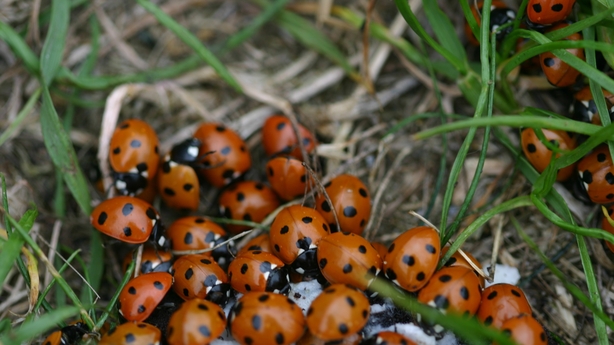
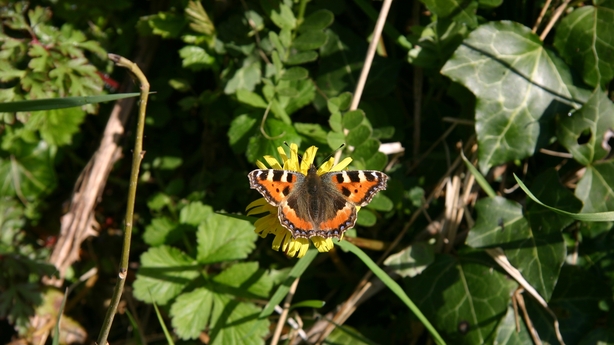
May is the first month of the year when most insects appear in numbers. Keep an eye out for the Cabbage White Butterfly, flitting through hedgerows on warm sunny days without a care in the world. Butterflies are nectar drinkers and possess a long proboscis, or drinking straw, which they unwind when they land on a flower and suck nectar from the nectary. Once they have had their fill, they wind up the proboscis and fly on to the next flower for more. You may think of this as a one way arrangement, with only the Butterfly gaining from it, but the butterfly inadvertently carries pollen from flower to flower and thereby pollinates many flowers on his journey.
The Ladybird is often referred to as the "gardener’s friend" for the number of Aphids or Greenfly that he consumes. Greenfly feed on garden plants and the ladybird feeds on the greenfly. This is a good example of biological control and a much better way of getting rid of greenfly than by spraying your Roses or vegetables with chemicals.
